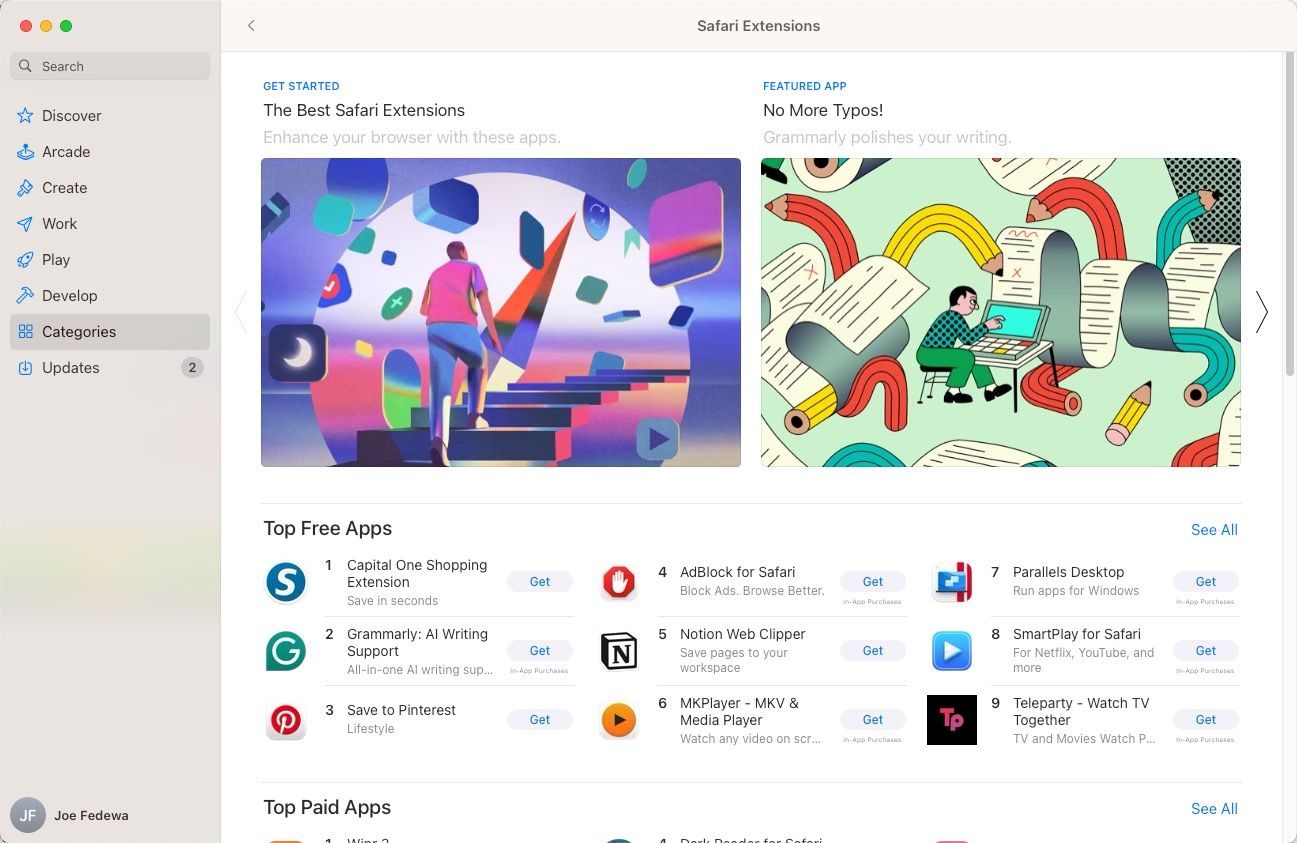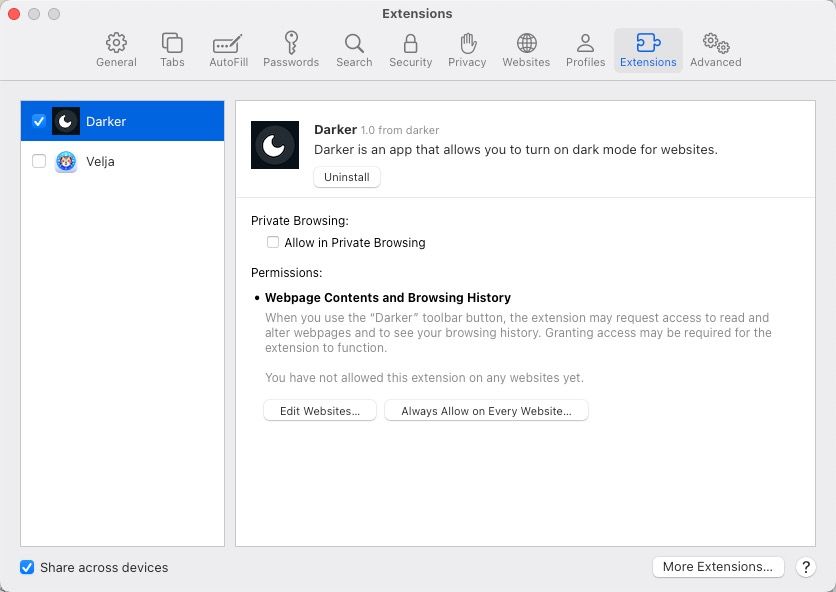Summary
- Apple’s requirement for developers to use Xcode and submit extensions through the App Store creates significant hurdles not present on other browsers.
- The annual $99 fee for the Apple Developer Program can deter smaller developers or those offering free extensions.
- Safari’s unique extension APIs mean some functionalities available on other browsers simply aren’t possible or require significant compromises, leading some developers to abandon the platform.
One of the standout features of web browsers we’ve come to rely on is extensions. If you use Safari on your Mac, you may have noticed the extension landscape on Apple’s browser looks a little sparse compared to its rivals, and there are some pretty specific reasons for that.
Apple Makes It Difficult
If you’ve ever downloaded extensions for Chrome, Firefox, or even Microsoft Edge, you know it’s usually a pretty seamless process. You head to their respective web stores, find what you need, and with a click or two, it’s ready to use in your browser. Apple takes a much different approach with Safari, and that difference creates significant hurdles for developers.
For starters, if a developer wants to offer a Safari extension, they’re required to build it using Xcode, Apple’s development environment. This immediately adds a layer of complexity that isn’t present with other browsers, which often allow for extension development using more widely adopted web technologies.
Safari extensions in the Mac App Store.
But the gatekeeping doesn’t stop there. Once an extension is developed, it has to go through Apple’s App Store submission process. This isn’t just a simple upload like on some other platforms. It involves adhering to Apple’s guidelines and waiting for their review. On top of that, developers need to have a paid Apple Developer Program membership, which costs $99 per year. This annual fee can be a significant deterrent, especially for smaller developers or those who might offer free or niche extensions.
These roadblocks simply don’t exist for the vast majority of extensions on other popular browsers. The open nature of Chrome, Firefox, and Edge’s extension ecosystems allows more developers to participate, leading to a much wider selection for people who use them.

Related
How to Install Safari Extensions on Mac
Extensions are mini-apps that add extra functionality to your browser. In Chrome, you add an extension, and that’s it. But Safari on Mac does things differently as extensions are shipped as apps. Here’s how to install Safari extensions on Mac.
Safari Works Differently
Enabling an extension in Safari.
Beyond the App Store requirement, the fundamental way Safari handles extensions also plays a role in the smaller library. The APIs that allow extensions to interact with the browser are different in Safari compared to Chromium-based browsers (like Chrome and Edge) and Firefox.
Certain functionalities that are available in other browsers either don’t exist in Safari’s extension API or work in a significantly different and often more limited way. This can make it difficult, or even impossible, for developers to bring over all the features of their existing extensions to Safari. Raymond Hill, the developer behind the popular ad blocker uBlock Origin, stopped supporting Safari, and it’s not clear if it will ever come back.
An extension that deeply modifies a webpage’s content or behavior might rely on specific APIs in Chrome or Firefox that have no direct equivalent in Safari. This means developers might have to make significant compromises or, as Hill did, decide that it’s not worth the effort to try and replicate the functionality on Apple’s browser. This is why some of your go-to extensions simply aren’t available when you’re using Safari.
The hoops developers have to jump through to get their extensions onto your Mac’s Safari browser are considerably higher than with Chrome or Firefox. Requiring the use of Xcode, navigating the App Store submission process, and shelling out for a yearly developer fee create barriers that many simply choose not to deal with.
Ultimately, the sparser extension landscape on Safari boils down to Apple’s distinct philosophy. While other browsers embrace a more open ecosystem, leading to a wider selection of tools at your fingertips, Safari prioritizes tighter control over what gets integrated. This means you might miss out on some of the popular extensions available elsewhere, but you can likely count on a more consistent and secure browsing experience.

Related
I Always Change These 6 Safari Security Settings
These six settings form the foundation of a secure browsing experience in Safari. While they might occasionally need an extra click here or there—like allowing location access for a map or temporarily disabling Private Relay for a stubborn website—the privacy benefits far outweigh these minor inconveniences. Make it a habit to check these settings after major Safari updates, as preferences can sometimes reset during the update process. Remember, in today’s digital world, a little paranoia about privacy goes a long way toward keeping you safe and secure when online.





